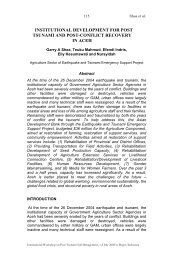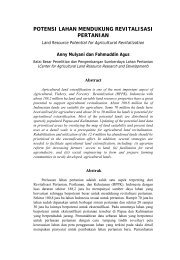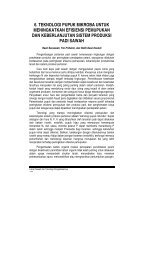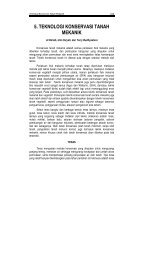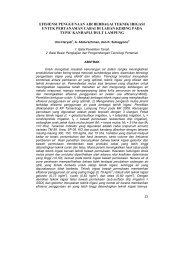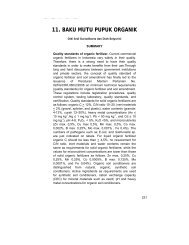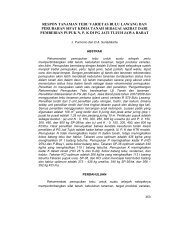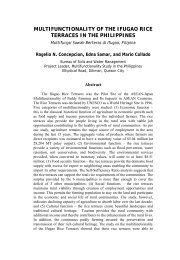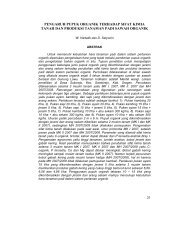Proceedings - Balai Penelitian Tanah
Proceedings - Balai Penelitian Tanah
Proceedings - Balai Penelitian Tanah
Create successful ePaper yourself
Turn your PDF publications into a flip-book with our unique Google optimized e-Paper software.
133<br />
Figure 1. Locations of assessment sites<br />
McLeod et al.<br />
In each site 1-3 permanent transects of about 100 m long each were<br />
selected based on visual assessment of crop performance (Poor,<br />
Medium and Good areas) at the initial survey in August 2005.<br />
The apparent soil electrical conductivity (ECa) was measured at 5 m<br />
intervals along each transect using the Geonic EM38 instrument. This<br />
was conducted every three months between August 2005 and<br />
January 2007. Both horizontal, EMh, (most sensitive to 0-45 cm<br />
depths) and vertical, EMv, (most sensitive to 45-150 cm depths)<br />
readings were taken at each measurement point. A higher EMh value<br />
indicates salt accumulation in the top 30-45 cm of the soil profile,<br />
while a higher EMv value indicates salt accumulation in the lower 45-<br />
150 cm of the soil profile.<br />
The site specific calibration to convert ECa data to soil electrical<br />
conductivity at field saturation (ECe) was developed following Slavich<br />
and Peterson (1993), and Slavich (2002).<br />
RESULTS AND DISCUSSION<br />
Soil salinity in the tsunami affected areas was highly variable between<br />
the assessment sites (Figure 2). It had a wide range of values and<br />
was generally higher at the soil surface (Table 1). Soil salinity reduced<br />
over time due to leaching from natural rainfall or irrigation water.<br />
However, some sites remained saline until January 2007.<br />
International Workshop on Post Tsunami Soil Management, 1-2 July 2008 in Bogor, Indonesia



